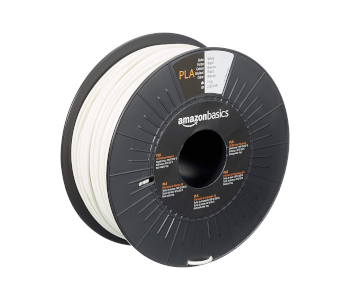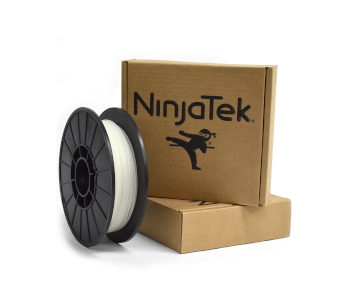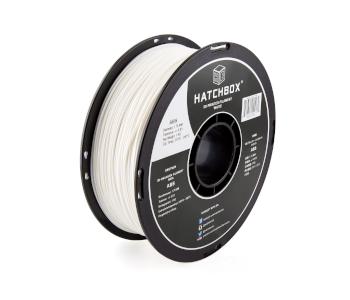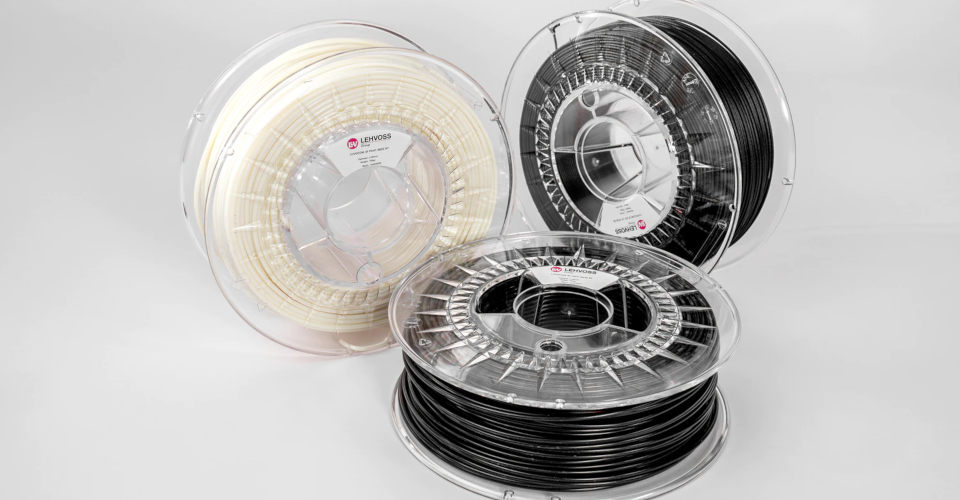Which Filament Colors Should You Buy?
One of the best things about FDM printing is the fact that there are probably several hundred different types and brands of filament materials out there. From standard PLA to high-temperature filaments and fancy gold-colored ones, it seems that there’s a brand-new and innovative market to hit the market every single year.
However, this embarrassment of riches can also be intimidating for beginners to the hobby. Which filament should you have if you’re still new? Which filament should you always keep in stock? Is there a particular filament that can help you level up your 3D printing skills? We’ll answer all those questions in this article.
For beginners – Gizmo Dorks PLA Filament Sampler Pack

As a beginner, it’s tough to figure out what works for you. The best way to ease yourself into this hobby is to realize how much fun it can be, despite the frustrating moments. This sampler pack of four different colors (blue, green, orange, and red) from Gizmo Dorks is a great way to get you to start experimenting with your new 3D printer without spending too much.
Each of the four spools that come with this sampler pack only weighs 200 grams, so it’s not a huge commitment. And while the colors aren’t exceptionally good, you should be able to come up with a few interesting and fun projects.
The great thing about PLA is that it’s a very beginner-friendly material. If your printer doesn’t come with a heated bed, or if you don’t have a glass bed, then you can still work with PLA perfectly fine. It’s also not prone to warping, which is one of the biggest challenges in 3D printing.
You can also take this chance to try your hand at finishing your PLA prints. Colored PLA prints are best for this. All it takes is some sandpaper and a polishing compound and you should be golden. The techniques for finishing PLA are nothing complex and you’ll get the hang of it after a while.
Always keep in stock – White PLA or Natural PLA

When you suddenly get an idea of something to 3D print, you will want to have a filament on hand that’s easy to work with, versatile, and inexpensive. PLA in either White or Natural colors is perfect for this. As we’ve mentioned, PLA is one of the easiest materials to work with.
Since it prints at relatively lower temperatures and does not warp, you can print with PLA at high speeds. This means turning your idea into reality as quickly as possible. The reason we’re going with either White or Natural is that it’s very easy to paint PLA with any color that strikes your fancy. This is much better than being stuck printing with blue or hot pink filament because that’s all you have.
The other reason we’re going with PLA as our ‘go-to’ filament is the fact that it’s sustainable and 100% biodegradable. When experimenting, you will invariably go through failed prints that you need to scrap. This does not help our planet’s problem with solid waste, so we prefer going with PLA for our more ‘disposable’ projects. Keep in mind that PLA filament can come with non-biodegradable additives, like paint, so double-check with the manufacturer if their products are 100% biodegradable.
To experiment with – PVA

Polyvinyl Alcohol (PVA) is certainly one of the more unusual filament materials because, when used correctly, it should not show up on the final print. Instead, PVA is used as a material for support structures in case your design has a lot of overhanging features. You will need a printer with multi-extruder features to fully realize the potential of PVA, so perhaps this is something you’ll have to save for later.
What makes PVA such an excellent support material? For one, this isn’t true for all filament types. PVA is particularly suitable for PLA because they print at similar temperatures, which means that one filament will not compromise the quality of the other. If you’ve got a lot of PLA on hand, then printing with PVA as support is an excellent way to expand your 3D design horizon.
The other peculiar characteristic of PVA is that it readily dissolves in water. PVA is the same material used for those laundry detergent pods that you can just throw in the wash. This means that finished prints with PVA supports can be simply submerged in water to completely dissolve those support structures away. Best of all, the vinyl alcohol that gets dissolved in the water is completely safe for disposal down your sink.
To learn advanced techniques – Clear TPE

TPE, or Thermoplastic Elastomer, is also one of the more unusual filaments you can try. The best way to describe it is rubber-like – flexible, with excellent impact resistance, and a non-slip characteristic. It could be useful as a phone case, non-slip pad, gaskets for your pipes, or a door stopper.
All this talk about TPE’s physical characteristics may not seem like a big deal, but one thing you need to know is that printing with flexible filaments is a whole different monster. You’ll have to anticipate a lot of deformation and buckling inside the extruder assembly, as well as issue with bed adhesion and stringing. However, these are nothing that a bit of tweaking of the printer settings and application of adhesives to the print bed won’t solve.
The usefulness of TPE more than makes up for its slightly more complicated printing process. It’s not the toughest material to work with, but it’s a great way for you to learn about the more nuanced aspects of 3D printing.
To learn advanced techniques, Part 2 – White ABS

It’s peculiar to see that one of the top two most popular filaments used in 3D printing is also one of the toughest to work with. This is probably a testament to the usefulness of ABS mostly because of its toughness, thermal stability, and chemical stability. It has a lot of commercial and industrial uses, despite the setback innate to the material.
For beginners, ABS can prove to be one of the most frustrating filaments. It prints at very high temperatures, and you’re going to need an appropriately hot print bed. It’s also notoriously prone to warping, so you’re certainly going to need some adhesives. Even those measures may not be enough, and there’s a whole range of tools and methods that you can try to get the perfect ABS print.
From brims and rafts to enclosures for your build platform, there’s no shortage of all the creative ways that 3D printing professionals have come up with to overcome the challenges of ABS. If you haven’t printed with ABS before, the best way to learn how to do it is to go ahead and give it a try.
One more thing we should mention is that ABS emits noxious and possibly carcinogenic gaseous compounds during printing. Don’t print with ABS in a room without ventilation and try to stay away from the printer as much as you can. If necessary, only tinker with your 3D printer with the appropriate breathing protection that can filter out chemical compounds.
For printing pretty stuff – Sampler Composite Filaments

Going back to the fun side of things, there are now filaments that you can use to 3D print objects that simulate the look of wood and certain metals. Called composite filaments, these filaments are typically made of fine solid particles suspended in a PLA matrix in varying ratios. The use of PLA means that printing with these filaments is pretty easy while delivering a unique visual appeal.
This sample pack of composite filaments from AMOLED includes Wood, Bronze, Marble, and Shining Gold. The names should be enough to tell you what material each of the filaments is mimicking. This is a great way to spruce up your old designs or come up with 3D prints that are nice enough to be given as gifts.
While these filaments come up with prints that already look very good, you can make them even better with some finishing. Depending on the filament, there are various finishing options available to you. Wood can be finished with some polishing and wood lacquer, while bronze can be can rusted to get that unique patina color.
Composite filaments are a great way to stretch your creative muscles without giving you too much of a hard time. Just make sure to read the printing instructions of the filament you’re getting – you may have to swap out your printer’s stock nozzle with something a little more wear-resistant.
Final thoughts
If you’re just starting with 3D printing, our advice is to take it slow. It’s easy to get excited about all the different filaments available out there only to find yourself in over your head with how problematic they can be. The skills will take some time to develop, but you’ll get there eventually by reading up on new stuff and trying them out.
No matter which filament you use, don’t forget that 3D printing should be fun. It’s an exercise in creativity and in how you can turn your imagination into reality. It’s not always simple, but it does not have to be complicated.





